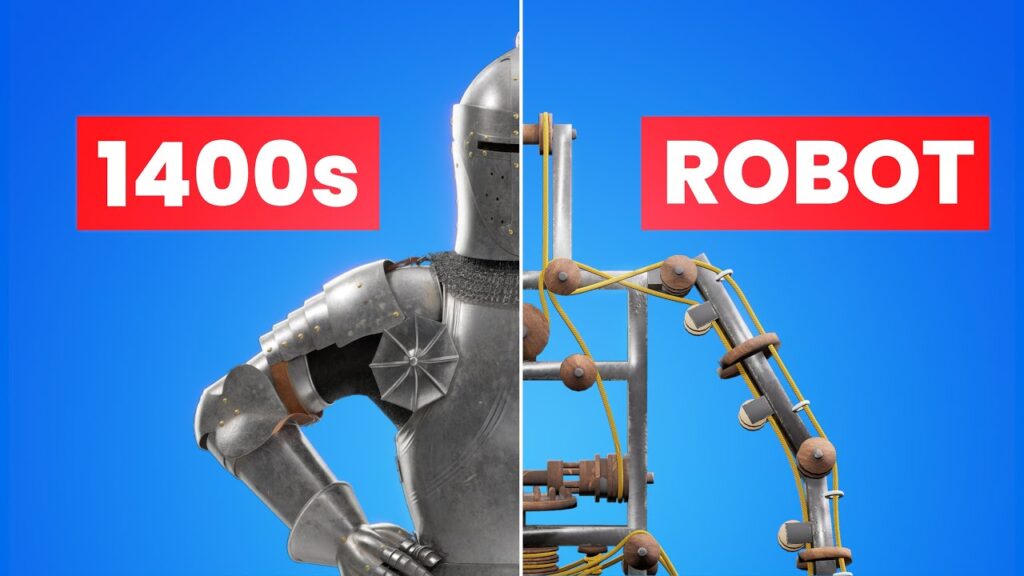
"To imag­ine our­selves into the time of Leonar­do da Vin­ci, we must first imag­ine a world with­out such things as heli­copters, para­chutes, tanks, div­ing suits, robots. Yet those all exist­ed for Leonar­do him­self - or rather, they exist­ed in his imag­i­na­tion. What he did­n't build in real life, he doc­u­ment­ed in his note­books, leav­ing behind mate­r­i­al for appre­ci­a­tions of his genius that would con­tin­ue half a mil­len­ni­um lat­er."
"This helps us see Leonar­do's work from the per­spec­tive of his con­tem­po­raries, and to feel how sur­prised they would've been to encounter a seat­ed knight who stands up, opens his visor, and reveals that there's no one inside the armor. That sort of thing might even amuse us here in the twen­ty-first cen­tu­ry, but accus­tomed as we are to see­ing machines that move around under their own pow­er - and now, see­ing them take more cred­i­ble humanoid form every day -"
Leonardo da Vinci imagined helicopters, parachutes, tanks, diving suits, and robots and recorded them extensively in notebooks. Many designs remained unbuilt but preserved in detailed drawings that combined anatomical study with mechanical invention. He translated observations of human muscle into gears, pulleys, and systems that could produce realistic limb movement. Contemporary visualizations using 3D animation render those designs and reveal how surprising mechanized devices would have appeared to Renaissance observers. Renaissance viewers expected human operators, so empty or self-moving armor would astonish them. Several of Leonardo's devices explicitly rely on human power and anatomical insight to function.
Read at Open Culture
Unable to calculate read time
Collection
[
|
...
]